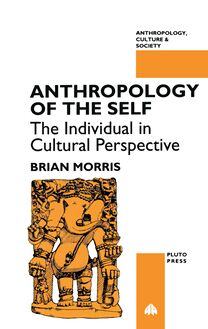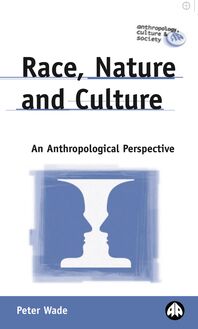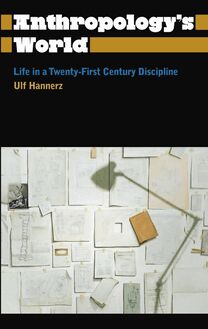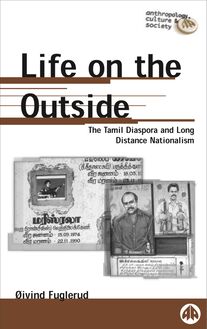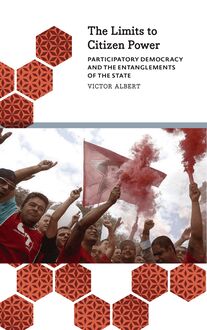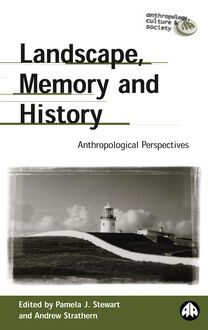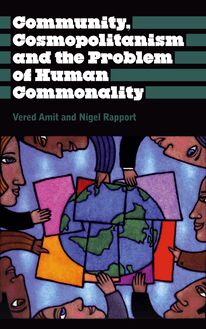-
 Univers
Univers
-
 Ebooks
Ebooks
-
 Livres audio
Livres audio
-
 Presse
Presse
-
 Podcasts
Podcasts
-
 BD
BD
-
 Documents
Documents
-
- Cours
- Révisions
- Ressources pédagogiques
- Sciences de l’éducation
- Manuels scolaires
- Langues
- Travaux de classe
- Annales de BEP
- Etudes supérieures
- Maternelle et primaire
- Fiches de lecture
- Orientation scolaire
- Méthodologie
- Corrigés de devoir
- Annales d’examens et concours
- Annales du bac
- Annales du brevet
- Rapports de stage
La lecture à portée de main
186 pages
English
Découvre YouScribe en t'inscrivant gratuitement
Je m'inscrisDécouvre YouScribe en t'inscrivant gratuitement
Je m'inscris
Obtenez un accès à la bibliothèque pour le consulter en ligne
En savoir plus
En savoir plus
186 pages
English
Obtenez un accès à la bibliothèque pour le consulter en ligne
En savoir plus
En savoir plus

Description
This book reexamines the interconnectedness of culture and creativity in an increasingly hybrid world. They argue that while many of the old certainties about high culture and artistic canons may now be disintegrating, culture and creativity themselves are still very much a reflection of social processes involving power and the control of resources.
Case studies include youth subcultures in Europe; experimental theatre derived from the Brazilian candomblé dance; the role of memory in mythology among the Pukapukan of Polynesia; the evolution of football and polo in Argentina; gender relations in Algerian raï music; the notion of authenticity in artistic movements in Zanzibar; traditional and modern practices of the Lio in Indonesia; and kula exchange and social movements in the Trobriand Islands in the Pacific.
Contributors
Introduction by John Liep
Acknowledgments
Part I: CREATIVITY IN ACTION AND ANALYSIS
1. Creative Arguments of Images in Culture, and the Charnel House of Conventionality by James Fernandez
2. Othello's Dance: Cultural Creativity and Human Agency by Kirsten Hastrup
3. The Iron Cage of Creativity. An Exploration by Jonathan Friedman
4. Wondering about Wutu by Robert Borofsky
5. Celebrating Creativity: On the Slanting of a Concept by Orvar Löfgren
6. The Construction of Authenticity: The Case of Subcultures by Rolf Lindner
Part II: LOCALIZED CREATIVE PROCESSES
7. Nationalism, Football and Polo: Tradition and Creolization in the Making of Modern Argentina by Eduardo Archetti
8. The 'Playing' of Music in a State of Crisis: Gender and Raï Music in Algeria by Marc Schade-Poulsen
9. Creative Commoditization: the Social Life of Pharmaceuticals by Susan Reynolds Whyte
10. Escaping Cultures: the Paradox of Cultural Creativity by David Parkin
11. Recontextualizing Tradition: 'Religion', 'State' and 'Tradition' as Co-existing Modes of Sociality Among the Northern Lio of Indonesia by Signe Howell
12. Kula and Kabisawali: Contexts of Creativity in the Trobriand Islands by John Liep
Index
Case studies include youth subcultures in Europe; experimental theatre derived from the Brazilian candomblé dance; the role of memory in mythology among the Pukapukan of Polynesia; the evolution of football and polo in Argentina; gender relations in Algerian raï music; the notion of authenticity in artistic movements in Zanzibar; traditional and modern practices of the Lio in Indonesia; and kula exchange and social movements in the Trobriand Islands in the Pacific.
Contributors
Introduction by John Liep
Acknowledgments
Part I: CREATIVITY IN ACTION AND ANALYSIS
1. Creative Arguments of Images in Culture, and the Charnel House of Conventionality by James Fernandez
2. Othello's Dance: Cultural Creativity and Human Agency by Kirsten Hastrup
3. The Iron Cage of Creativity. An Exploration by Jonathan Friedman
4. Wondering about Wutu by Robert Borofsky
5. Celebrating Creativity: On the Slanting of a Concept by Orvar Löfgren
6. The Construction of Authenticity: The Case of Subcultures by Rolf Lindner
Part II: LOCALIZED CREATIVE PROCESSES
7. Nationalism, Football and Polo: Tradition and Creolization in the Making of Modern Argentina by Eduardo Archetti
8. The 'Playing' of Music in a State of Crisis: Gender and Raï Music in Algeria by Marc Schade-Poulsen
9. Creative Commoditization: the Social Life of Pharmaceuticals by Susan Reynolds Whyte
10. Escaping Cultures: the Paradox of Cultural Creativity by David Parkin
11. Recontextualizing Tradition: 'Religion', 'State' and 'Tradition' as Co-existing Modes of Sociality Among the Northern Lio of Indonesia by Signe Howell
12. Kula and Kabisawali: Contexts of Creativity in the Trobriand Islands by John Liep
Index
Sujets
Informations
| Publié par | Pluto Press |
| Date de parution | 20 février 2001 |
| Nombre de lectures | 0 |
| EAN13 | 9781849641012 |
| Langue | English |
| Poids de l'ouvrage | 1 Mo |
Informations légales : prix de location à la page 0,6250€. Cette information est donnée uniquement à titre indicatif conformément à la législation en vigueur.
Extrait
LOCATING CULTURAL CREATIVITY
Edited by JOHNLIEP
P Pluto Press LONDON • STERLING, VIRGINIA
First published 2001 by PLUTO PRESS 345 Archway Road, London N6 5AA and 22883 Quicksilver Drive, Sterling, VA 20166–2012, USA
www.plutobooks.com
Copyright © John Liep 2001
The right of John Liep to be identified as the author of this work has been asserted by him in accordance with the Copyright, Designs and Patents Act 1988.
British Library Cataloguing in Publication Data A catalogue record for this book is available from the British Library
Library of Congress Cataloging in Publication Data Locating cultural creativity / edited by John Liep. p. cm.— (Anthropology, culture, and society) ISBN 0–7453–1703–0 (hardback) 1. Creative ability—Cross-cultural studies. 2. Culture. 3. Social change. I. Liep, John. II. Series. GN453.L63 2000 306—dc21 00–009108
10 10
09 9
ISBN 0 7453 1703 0 hardback ISBN 0 7453 1702 2 paperback
08 8
07 7
06 6
05 5
04 4
03 3
02 2
01 1
Designed and produced for Pluto Press by Chase Production Services, Fortescue, Sidmouth EX10 9QG Typeset from disk by Stanford DTP Services, Northampton Printed in the European Union by Antony Rowe, Chippenham, England
CONTENTS
Acknowledgments
Introduction John Liep
PART I: CREATIVITY IN ACTION AND ANALYSIS
1. Creative Arguments of Images in Culture, and the Charnel House of Conventionality James W. Fernandez 2. Othello’s Dance: Cultural Creativity and Human Agency Kirsten Hastrup 3. The Iron Cage of Creativity: An Exploration Jonathan Friedman 4. Wondering about Wutu Robert Borofsky 5. Celebrating Creativity: On the Slanting of a Concept Orvar Löfgren 6. The Construction of Authenticity: The Case of Subcultures Rolf Lindner
PART II: LOCALIZED CREATIVE PROCESSES
vii
1
15
17
31
46
62
71
81
91
7. Nationalism, Football and Polo: Tradition and Creolization in the Making of Modern Argentina 93 Eduardo P. Archetti 8. The ‘Playing’ of Music in a State of Crisis: Gender and Raï Music in Algeria 106 Marc Schade-Poulsen 9. Creative Commoditization: The Social Life of Pharmaceuticals119 Susan Reynolds Whyte 10. Escaping Cultures: The Paradox of Cultural Creativity 133 David Parkin
v
viLocating Cultural Creativity 11. Recontextualizing Tradition: ‘Religion’, ‘State’ and ‘Tradition’ as Coexisting Modes of Sociality among the Northern Lio of Indonesia 144 Signe Howell 12. Kula and Kabisawali: Contexts of Creativity in the Trobriand Islands 159 John Liep
Contributors Index
172 173
Acknowledgements
The chapters in this book were first presented at a workshop organized by the Institute of Anthropology, University of Copenhagen in late 1994. The workshop was part of the research programme ‘Complex Cultural Processes’ at the institute financed by a major grant from the Foundation of Pure Research of the Danish Ministry of Education. The editor expresses his thanks to the participants in the workshop for constructive discussions, to the con-tributors, who tolerantly considered his editorial suggestions, and to the staff of the Institute of Anthropology for inspiration at a subsequent seminar where I presented the introduction. The institute has further supported the editing of this volume and contributed generously to its publication.
vii
INTRODUCTION John Liep
May 1995 was the fiftieth anniversary of the liberation of Denmark from German occupation during the Second World War. The Ministry of Culture had set aside generous funds for celebratory manifestations. By far the most costly and provocative project to be approved was a gigantic installation by a young artist who proposed illuminating the entire western coastline of Denmark with a single laser beam relayed from hill to hill. This performance on the midnight of peace was to continue along the German coast and thus demonstrate friendly cooperation across the border. The artist herself explained the installation as a re-creation in a new medium of the customary Danish commemoration of the liberation. This celebration originated spon-taneously on the very night of German capitulation when people in many towns tore down blackout curtains and put candles in their windows. The project immediately gave rise to heated public debate and became the dominating topic of the media during the spring. Some praised the idea of employing a new technology in this novel and striking experiment. Populist critics opposed wasting taxpayers’ money on yet another outrageous scheme supposed to be ‘art’. By far the most bitter opposition came from old veterans from the wartime resistance movement. To them the installation brought back memories of another spectacle. This was when Hitler’s chief architect Albert Speer for the first time used searchlight beams to create a towering 1 celestial space above a Nazi rally in Berlin. The debate throws into relief several facets of the topic of this book. We show how creativity bursts forth when elements, which were already known but apart, are brought together by inventive people in a novel way. Concrete elements of experience, such as darkness and light, are used as metaphors, for example to stand for oppression and freedom. Sometimes metaphors are conveyed by new means and moved into new spaces. But the effect of creativity depends on the social environment it occurs in and on the inner motivations of its audiences. Creative action is promoted or hindered by insti-tutions in society and to ‘move the world’ it must resonate with deep emotions of people. We celebrate creativity, as I argue in this introduction, as the spark of the incessant innovation of modernity. But sometimes we shiver at the uses it may be put to. This book explores creativity from the perspective of anthropology and its sister discipline ethnology. We provide
1
2Locating Cultural Creativity new insights into the recent explosion of creativity in our world, the way creativity works and how it changes our lives. Much literature on creativity already exists. The vast majority of it is the work of psychologists and is concerned with exploring ‘the creative mind’ of the individual. Psychologists aim to discover the thought processes and backgrounds of exceptionally creative people and their relations to their sur-roundings. Related publications discuss how conditions encouraging creativity may best be promoted in education. A special domain of research involves creativity in innovative management. Finally, creativity has been a topic of interest in the history of science. All this literature centres on the individual creator and is therefore somewhat marginal to anthropological interest. Recently, some sociologists and historians of science have viewed creativity in terms of social and cultural process and have studied the insti-tutional framework for scientific research and its authorization (see for example Brannigan 1981 and papers in Boden 1994). This approach is much more relevant to anthropological concerns. For the purposes of this introduction I define creativity as activity that produces something new through the recombination and transformation of existing cultural practices or forms. As I suggest below, one may envisage a continuum from small-scale everyday creativity to intensive creativity con-centrated in a single place or period. Creativity involves the acceptance of the novel in a social environment (cf. the definition in Rosaldo et al. 1993:5). The terminnovationI regard as more or less synonymous with creativity, whereasimprovisationindicates a more conventional exploration of possi-bilities within a certain framework of rules. When anthropologists propose taking up a comparative study of cultural creativity, a certain objection is likely to be brought forward. This is that creativity as a specific preoccupation of our culture and times cannot be assumed to be found as an explicit notion and a relevant issue in all cultures. To this I would say, firstly, that the problems and issues which fire the curiosity and involvement of anthropologists are always grounded in the current developments and debates of Western culture, whereafter they are brought to bear on more distant life-worlds. In a progressively international world the scientific and intellectual hegemony of the West may be increas-ingly challenged but it is for the present a major factor. If, for reasons appertaining to our own part of the world, we find that creativity is an interesting problem, we will set out and try to locate it elsewhere and study the conditions that promote or limit it. Secondly, there is a global cultural field. This involves not only theecumene of cosmopolitans but also the global diffusion of ideas, messages, models, art forms, etc., and their manifold local appropriations (cf. Hannerz 1992:217ff.). If creativity is proliferating in the global field it is also becoming involved in numerous local agendas.
Introduction MODERNITY, THE WORLD SYSTEM AND CREATIVITY
3
A discussion of cultural creativity ought to broadly situate the notion itself in culture and history. Here, I shall emphasize that the connection between the growth of creativity and the processes associated with modernity seem clear. Daniel Miller has stressed the continuous change under modernity and the creativity this demands of a humanity which now incessantly must ‘... forge for itself the criteria by which it will live’ (1994:62). Instead of being placed in a timeless order, which came about through the original creation of the world by God, humanity finds itself in a condition where creation has moved into the present. The life trajectory of the individual and the course and shape of society are becoming a consciously human project. In the area of the West where modernity emerged, these are conditions inescapably intertwined with capitalism. The expansion of commodity exchange was accompanied by a separation of human actions from their embedding in traditional social relations. The development of a class of free entrepreneurs promoted the placing of value on risk-taking and innovation. Within this emerging class ideas crystallized about rights to self-organization and civil freedom. The quest of the Enlightenment was for liberation from the hierarchic and immobile order ofl’ancien régime, which was followed by the emphasis of Romanticism upon individual self-fulfilment. The competition of the market place forced capitalist entrepreneurs to revolutionize the means and modes of production and to create commodities to satisfy new desires. Thus, creativity became the mark of engineers and scientists. At the same time artists became separated from the dependency on and support of feudal and ecclesiastic patrons, and had to develop individual and novel styles to compete in the market. Creativity thus took two forms, represented as the contrast between the material and the spiritual: secular, rational scientific 2 discovery and the emotional, spiritual creativity of the artist. The historical process associated with the rise of modernity, which has engulfed and transformed the world, produced a differentiated world system. Thus the specific constellation of features (distanciation, reflexivity, trust in expert systems or whatever) that we associate with Western modernism does not penetrate with the same force, or establish itself in an identical config-uration, globally. Although politico-economic and media forces impinge everywhere, they do so in different ways and with different intensities and the political and cultural institutions they confront locally are highly diverse. Thus there is not one ubiquitous modernity but several historical and con-temporary versions. Miller (1994) proposed a study of comparative modernities as a timely anthropological project. His study of modernity in Trinidad sees it as no less modern or genuine than Western modernity, just different. However, it is productive to consider the conditions and limitations of modern developments in terms of a more explicit world system model. In many parts of the world, local societies have been involved for hundreds of years in long-distance trade and the penetration of the market. Strategies
4Locating Cultural Creativity and ways of thinking suggestive of modernity have been widespread but the institutional apparatus of Western European modernity is lacking. In world-system terms the situation could be characterized as a ‘peripheral modernity’ in contrast to the ‘central’ form. Granted that the social processes and changes in mentality associated with modernity are in general important background factors for creativity, I will therefore argue that these factors vary with position in the world-system. In any area of the world, the conditions affecting creative developments are influenced by the specific con-figuration of modernity in that part of the system. To return to the centre: with the late-modern penetration of the market into further domains of human life, the decentralization of capital, the extension and intensification of the international economy and the global-ization of the media, a great many transformations of social and intellectual relations are taking place. The ‘postmodern’ decentering of cultural production and authorization has resulted in a dehierarchization of the cultural field. Where securely entrenched cultural elites once adjudicated what was authentic and possessed quality and originality, we now experience an acceptance of popular and exotic cultural forms in the life-styles of the consumer society. An earlier stable hierarchy of spheres of cultural production and exchange is collapsing and formerly segregated ‘high’ and ‘low’ cultural forms are juxtaposed at a common level. This frag-mentation and disintegration of the cultural field results in a proliferation of cleavages and discords of signification. But it also evinces a multitude of encounters and cross-fertilization between hitherto separate cultural forms and environments. The expanding commoditization of culture and of display and desire have also influenced views on creativity. This has to do with the increasing reification of culture as spectacle and performance and with what is called the aestheticization of everyday life. The emerging class of ‘new profession-als’, much involved in the mediation of culture, excels in the consumption of novelty, the event and aesthetic experience (Featherstone 1991:43ff.; Bourdieu 1984:354ff.) Breaking away from the emotional self-control and sense of ‘knowing one’s station’ of the formerpetite bourgeoisiethis broad stratum of new intellectuals and cultural intermediaries pursues ever more varied sensibilities, lifestyles and forms of distinction. In this process of manifold fleeting images, socialities and values, the boundaries and hierarchies of former cultural structures weaken. To this class the world appears as a landscape of differences, or of hybridization, and creativity becomes a regular strategy in the externalization and appropriation of objects of fascination and desire. It would indeed be strange if these broad cultural concerns did not affect the life and thinking of anthropologists too. The discipline cannot escape the cultural processes in which it is enmeshed. One should therefore be aware that the fascination with creativity (as reflected in the present volume) involves to some degree what could be called a ‘gen-trification’ of anthropology. That is, the practitioners are themselves
Introduction5 participants in a broad trend of Western contemporary urban experience infused by elements of fashion, aesthetics, nostalgia etc. Where creativity was formerly located in the elevated circles of science and the secluded atelier of the artist, it now seems to be everywhere. If the term is bandied about in new forms of distinction and elitism it may as well be evoked in seemingly more democratic endeavours. If the media proclaim that creativity is to be found in the studios of designers and popular musicians, it may be claimed by the defenders of the dominated and outcast to be evident in the resistance of marginalized peoples and in the lifestyles of subcultures. Thus it has come about that creativity has been on the lips of all for some years. Löfgren’s contribution in this volume provides a critical overview of the recent history of the term and its employment by social and cultural scientists in anti-hegemonic discourses.
CREATIVE DESTRUCTION
There is a strong tendency, as Löfgren notes, to regard creativity as positive. It is ‘good for you’, ‘we can’t have enough of it’. Löfgren also shows how creativity hasbeen viewed in recent cultural studiesasa ‘weapon of the weak’, as part of the strategy of underdogs. This attitude to creativity is attractive to most anthropologists, who feel a natural solidarity with people at the grassroots. Amidst this celebration of creativity we should, however, consider in a larger perspective the rise and proliferation of creativity in modern world history. As I have argued above, creativity in its modern sense must be seen as part of the expansion of capitalism. Marx explored on a grand scale the great contradictory processes of the unfolding of capitalism. He emphasized the great revolutionary power of thebourgeoisie, how it had developed hitherto unseen forcesof production and created new formsof communication and knowledge. Thisrevolution of all human conditionsand relations, covering the entire globe, had created new needsand new waysof satisfying them, an immense accumulation of wealth, monuments of pro-ductivity and a world transformation of the entire life process. But this immense expansion of productive and commercial development was accompanied by what Schumpeter (quoted in Zukin 1991:4) called a ‘creative destruction’ on an awe-inspiring scale. Old forms of production and cooperation, old ways of life and relationships, whole classes and populations were swept away. And hand-in-hand with the growth of forces of production have gone the expansion of the destructive forces of war and the degradation and pollution of the natural resources of soil, water and air. Thus, creative construction in all its material and cultural aspects was predicated upon a creative destruction of awesome proportions and consequences. We should therefore not look only at the bright side of creativity. It would be naive to be blind to the fact that creativity may also be employed in projects of seduction, control and domination. I have already mentioned how
-
 Univers
Univers
-
 Ebooks
Ebooks
-
 Livres audio
Livres audio
-
 Presse
Presse
-
 Podcasts
Podcasts
-
 BD
BD
-
 Documents
Documents
-
Jeunesse
-
Littérature
-
Ressources professionnelles
-
Santé et bien-être
-
Savoirs
-
Education
-
Loisirs et hobbies
-
Art, musique et cinéma
-
Actualité et débat de société
-
Jeunesse
-
Littérature
-
Ressources professionnelles
-
Santé et bien-être
-
Savoirs
-
Education
-
Loisirs et hobbies
-
Art, musique et cinéma
-
Actualité et débat de société
-
Actualités
-
Lifestyle
-
Presse jeunesse
-
Presse professionnelle
-
Pratique
-
Presse sportive
-
Presse internationale
-
Culture & Médias
-
Action et Aventures
-
Science-fiction et Fantasy
-
Société
-
Jeunesse
-
Littérature
-
Ressources professionnelles
-
Santé et bien-être
-
Savoirs
-
Education
-
Loisirs et hobbies
-
Art, musique et cinéma
-
Actualité et débat de société
- Cours
- Révisions
- Ressources pédagogiques
- Sciences de l’éducation
- Manuels scolaires
- Langues
- Travaux de classe
- Annales de BEP
- Etudes supérieures
- Maternelle et primaire
- Fiches de lecture
- Orientation scolaire
- Méthodologie
- Corrigés de devoir
- Annales d’examens et concours
- Annales du bac
- Annales du brevet
- Rapports de stage
Signaler un problème
YouScribe
Le catalogue
Le service
© 2010-2024 YouScribe
